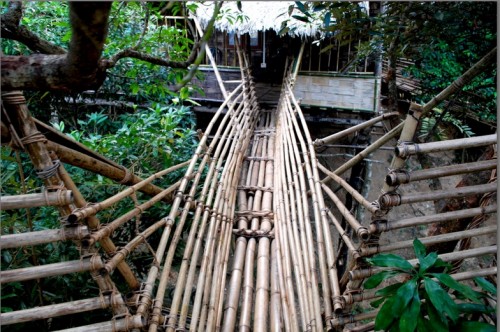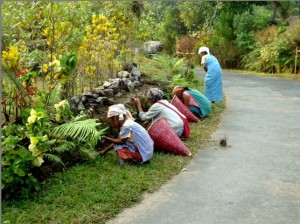Did you know: The Cleanest Village in Asia, is in India
When I first heard of Mawlynnong’s claim of being “The Cleanest Village in Asia”, I knew I had to plan a trip to see it. The village is at a
When I first heard of Mawlynnong’s claim of being “The Cleanest Village in Asia”, I knew I had to plan a trip to see it. The village is at a distance of around 90 km from Shillong, and the road leading up to it has some of the most panoramic and breathtaking views in the country.
Nestled in the pristine East Khasi Hills of Meghalaya the residents of this picturesque village along the Indo-Bangla border have learnt to live at harmony with Mother Nature and might very well become an example that urban folk should emulate.
Till over a decade ago this village was practically unknown to tourists until Discover India magazine accorded it the Cleanest Village status in 2005. As one walks around the narrow zig-zagging paths of the village one is astounded by the clean well maintained black tarmac and the spotless front-yards and sidewalks of the bamboo stilt houses. There are stylish bamboo dustbins everywhere and separate compost pits in various pockets of the village for organic and inorganic wastes. Polythene use is completely banned and so is smoking.

There are public toilets which the villagers themselves maintain and everyone takes part in the ritual weeding, sweeping and cleaning of the gardens and roads which happens every evening. Even the children are taught from an early age to keep their surroundings clean and they don’t hesitate to pick up the odd piece of garbage on the road and put it in the bin. The village is well supplied with an efficient localized water supply and sanitation system.

Just outside the village on the passing river is situated the amazing living roots bridge which speaks out for the ingenuity of the people. It is over 200 years old and was constructed by tying the roots of two banyan trees and maneuvering them to get entangled in such a way as to create a passage over the stream. The Sky-view tower on the eastern side of the village is a tall structure built on the support of a tree with bamboos and gives a wonderful view of the Bangladesh plains.
For the discerning traveler there are many unmapped trails that one can explore around the village full of little waterfalls and sacred forests abounding in flora and fauna. The guest houses in the village are basic tree houses built on top of stilts that almost jut out into the adjacent forest. Staying in them is an experience in itself.

There is a lot urban society could learn from Mawlynnong and its environmentally conscious citizens. The self sustaining models though rudimentary have very strong foundations and have more to do with behavior and customs that the peoples have adhered to and upheld. With the increasing influx of tourists the challenge for Mawlynnong is to maintain its culture and also educate outsiders with their ways. Do you think modern cities in India can replicate what the citizens of Mawlynnong have done? With better technology and infrastructural support Indian cities can certainly take Mawlynnong’s concepts forward and create self sustaining environment systems with minimal damage to the eco-systems. All we need are more responsible and conscientious citizens who will take up the cause of the environment.
Mawlynnong can be reached by road and it is roughly a three hour drive from Meghalaya’s capital, Shillong. The nearest airport is Guwahati, in Assam, which is around three hours from Shillong and is well connected with major metros.
This story made me
-
97
-
121
-
89
-
167













